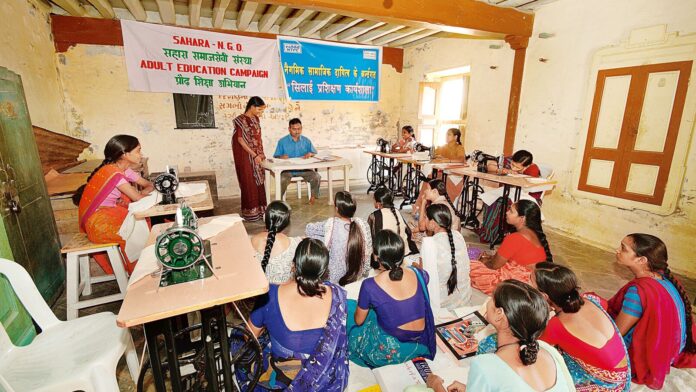Overall, on ‘goodness,’ they follow a normal distribution around the average, with most in the middle and tail-ends on both sides. ‘Good’ here means genuinely well-intentioned, dedicated and hard-working, with relevant expertise and integrity.
The ‘fake-flake’ framework is useful to assess the goodness of an NGO. In brief: ‘Fake’ and ‘flake’ are like the X and Y axes on which organizations can be mapped mentally. The labels at the other end of these dimensions are ‘authentic’ and ‘rigorous.’
NGOs get their financial resources from a variety of funders. These include philanthropic foundations, corporate social responsibility organizations, very wealthy individuals, multilateral institutions and government bodies.
There are also many middle-class individuals who support NGOs, but here, we will not include them in the definition of funders, and it will become clear why.
As NGOs depend on money from funders, the latter have significant influence over them. Over the past 20-odd years, funders have broadly pushed the normal bell curve of goodness towards the bad.
Their methods have made NGOs more fake and less authentic, and also more flaky and less rigorous. While this is an overall shift, there exist a large number of NGOs that are very good (authentic and rigorous, i.e). Equally, not all funders are of this kind, but the majority now seem to be.
This has happened because funders have requirements that influence the work of NGOs. When a large number have similar requirements, it has a cumulative effect on the NGO sector.
What are these requirements and why have they had such an effect?
Let’s begin with an analogy. Think of the owner of an IPL cricket team who demands that it must make at least 260 runs in every match, irrespective of the pitch, weather conditions or bowling quality. The owner has only watched cricket, but never played it professionally.
Targeting 260 runs is a good thing, but futile to do so without an understanding of the pitch and opposition. While this analogy is useful, it is an oversimplification, since social issues are far more complex than a cricket game.
For a start, the contexts are far more varied, path dependencies are greater, responses are unpredictable, uncontrollable factors are many more, conflicts are rife and the interactions between factors are infinitely complex.
Now let’s consider the specific ‘requirements’ pushing the distribution curve of NGOs, all of which are interconnected.
The first is scale—a push for greater numbers, be it in terms of geographical coverage or the count of people impacted. This is because of ignorance or underestimation of the fact that social-human interventions do not scale in industrial mode.
They must be worked upon person-by-person, context-by-context. The demand for scale, however, tempts NGOs to do superficial (flaky) work or exaggerate (fake) what they are doing.
The second requirement is of definitive changes that are instantly visible. This is another push towards superficiality, with NGOs opting to work on narrow problems and not getting into the depth of issues. If you take on complex issues, it is very hard to see a definitive change.
Certainly, there are markers of progress along the transformation path even on complex matters, but these also require great effort to achieve. Taking on simpler matters means easier work for an NGO and quick gratification for funders—a comfortable equilibrium.
The third requirement exacerbates this drift on the fake-flake axes—the demand for speed. Human and social changes take time. Demanding quick changes, and that too those that are definitive and clear, leads NGOs down a slippery slope of flakiness and fakeness.
One manifestation of the need for speed is that specific projects are run for short periods and then shut down—usually 2-3 years and often just a year. Even the surface of social issues cannot be scratched within such time frames.
The fourth requirement is of permanence or sustainability of change. This arises from a basic misunderstanding of the world. Nothing can be sustained without working at it continuously. Even our democracy requires constant work to maintain it.
So, how can anything maintain itself is the face of much larger social-cultural-political-economic forces? It can’t. But too many funders embrace this illusion.
Everyone in the social sector wants to improve the lives of more people quickly by effecting real changes that endure. However, when it becomes like a cricket team owner demanding 260 runs scored in every T20 match, then it mars the character of the team as well as the game.
Which is what has happened to the NGO sector. Funders’ requirements have eroded authenticity and rigour. NGOs can hardly resist this dynamic, because their very existence depends on funders. It is for funders like us to reflect and change course.
#Fakeandflaky #alertFunders #NGOs #note #social #change #isnt #T20 #cricket
